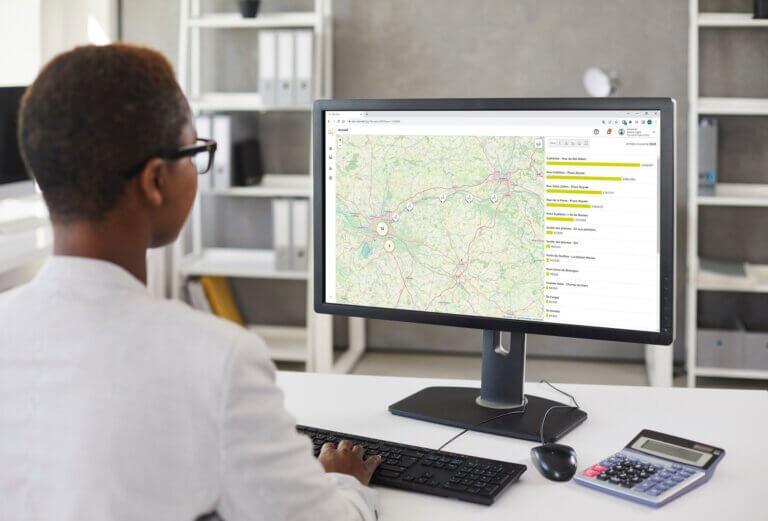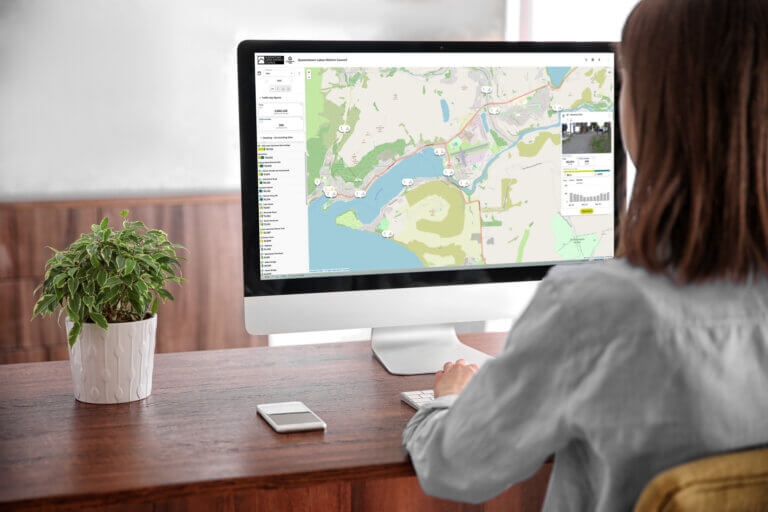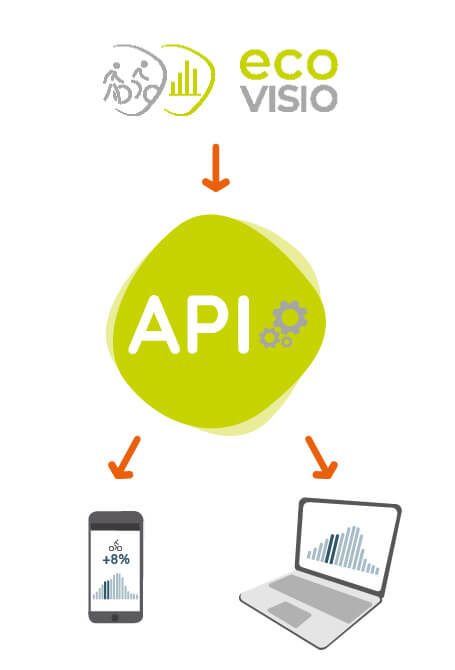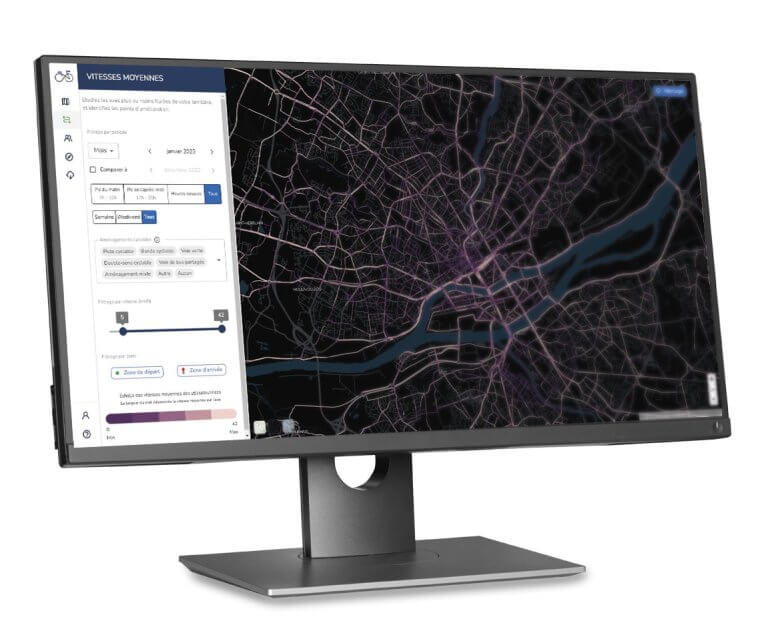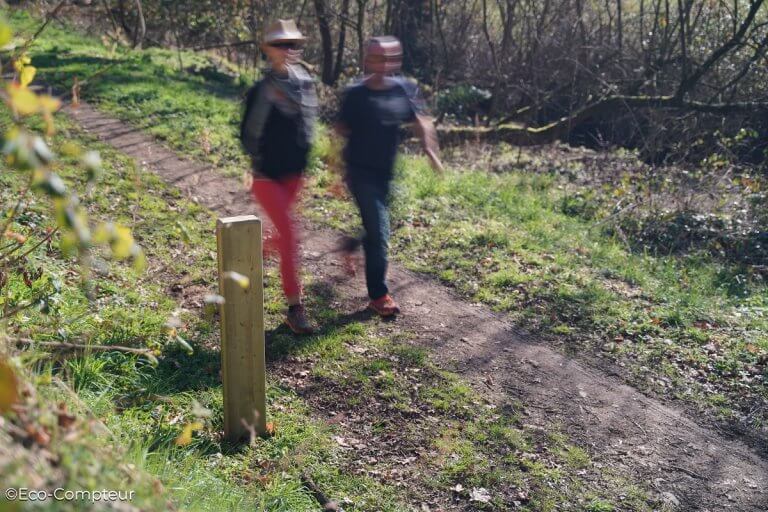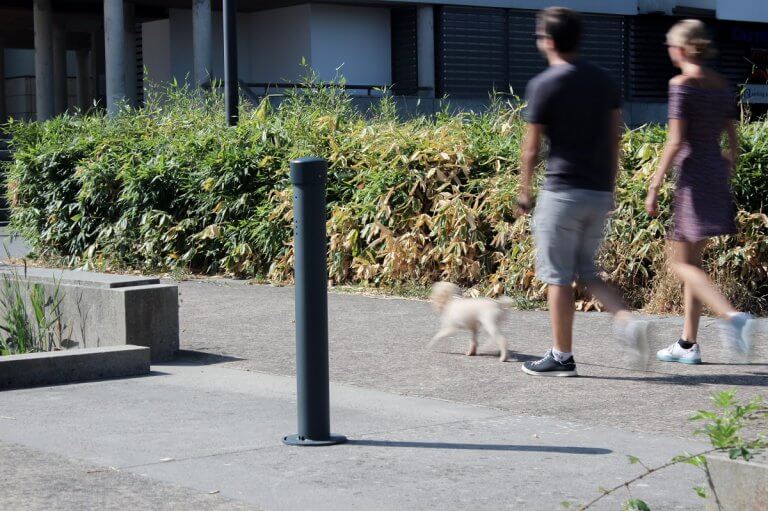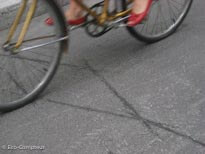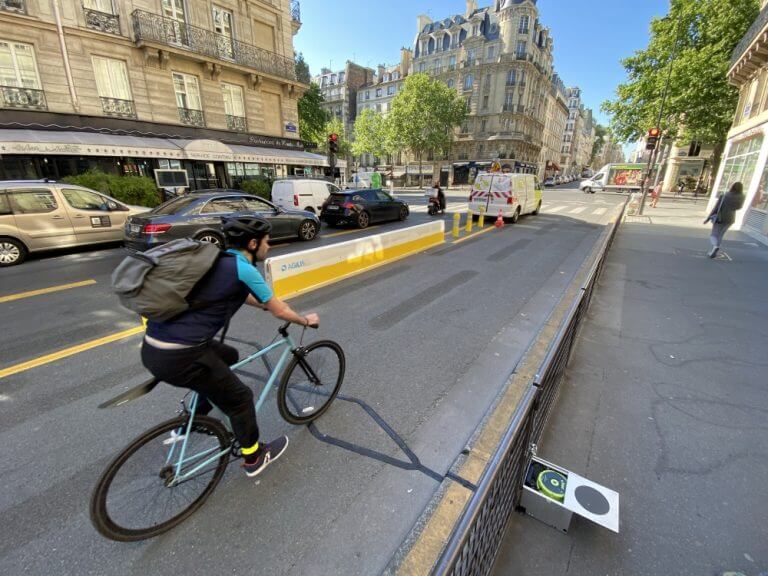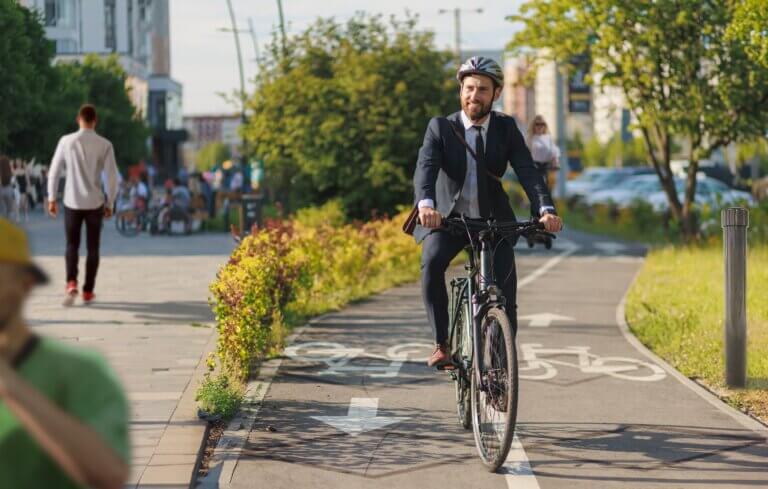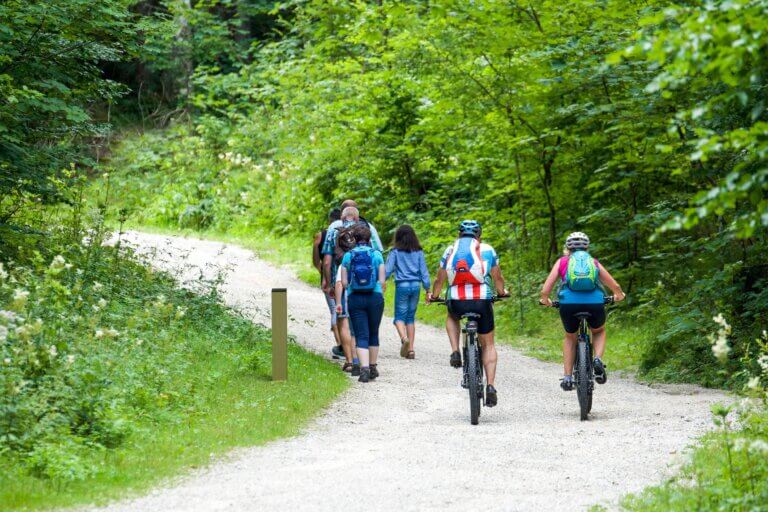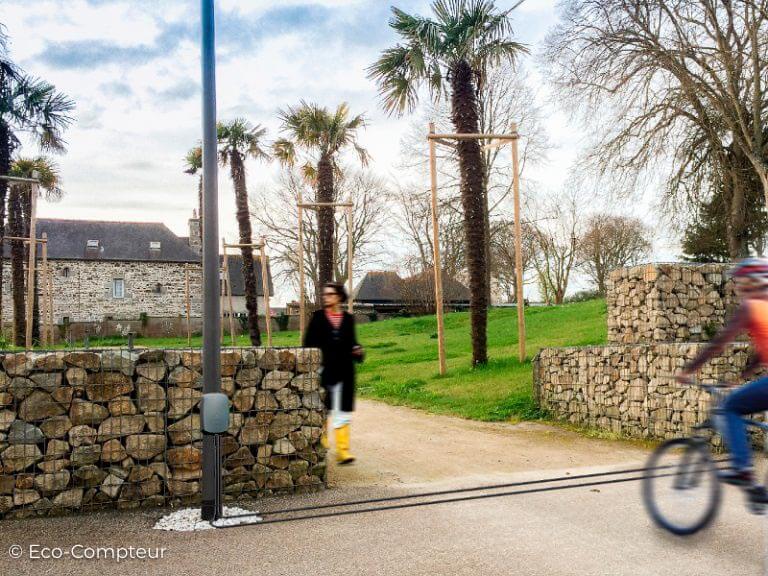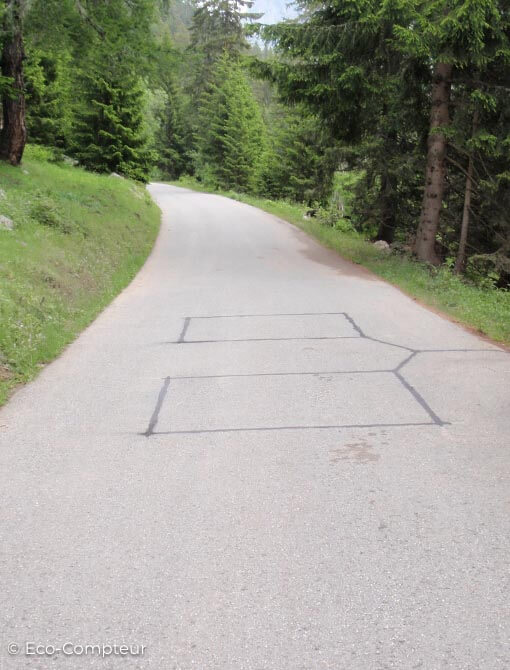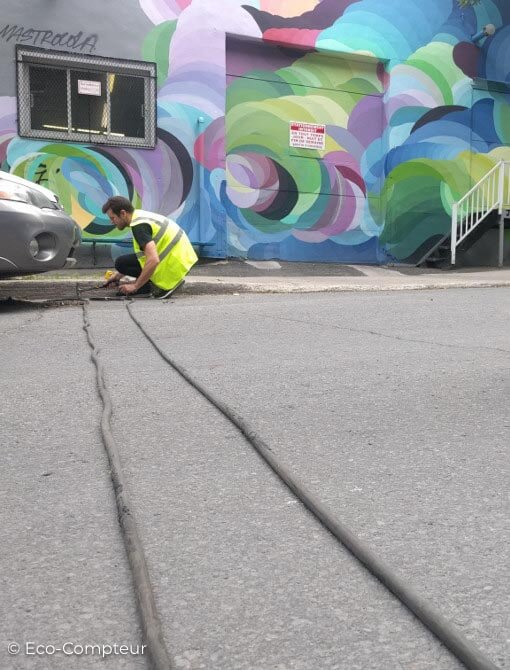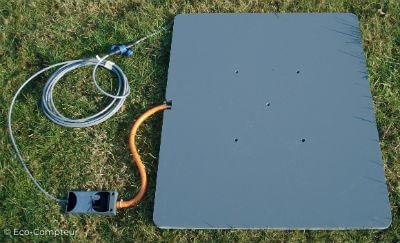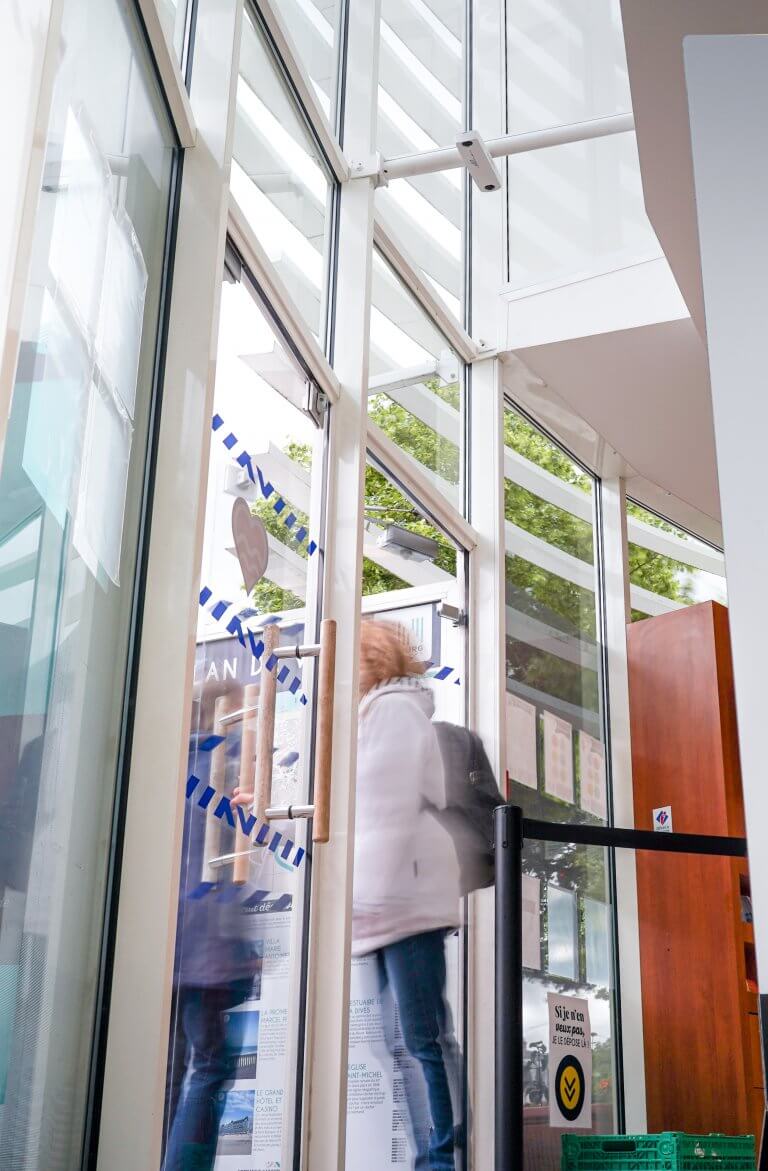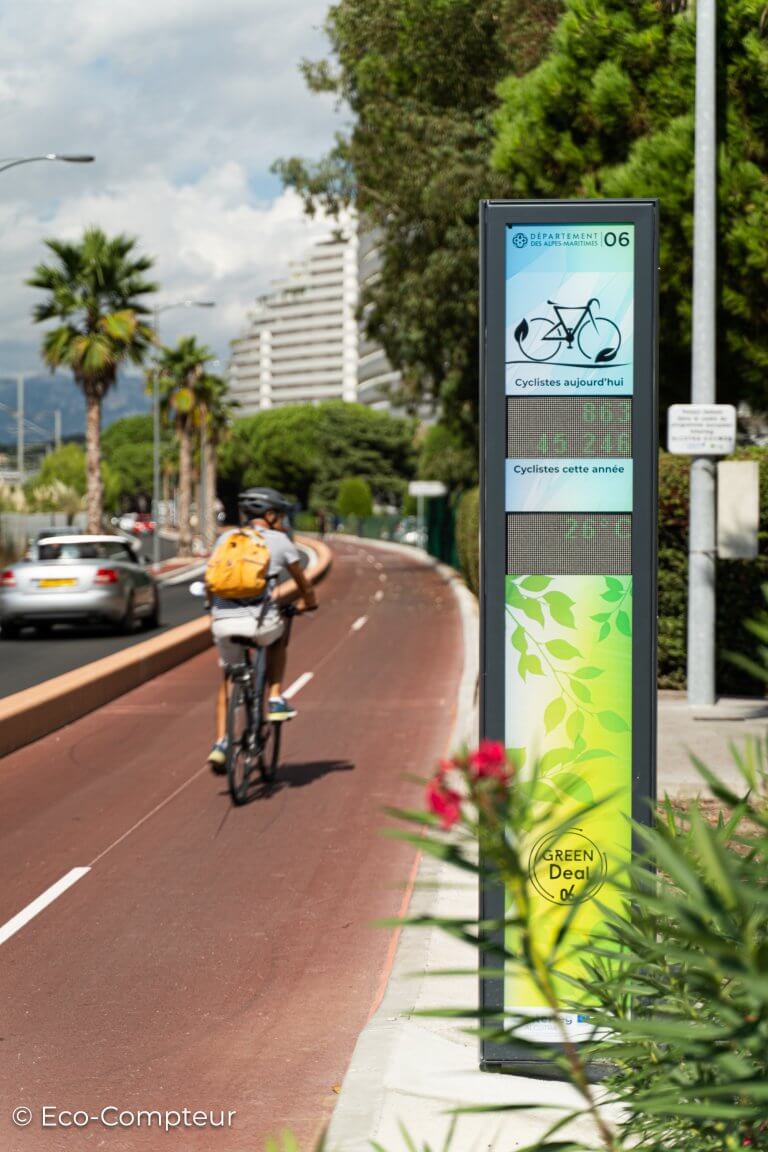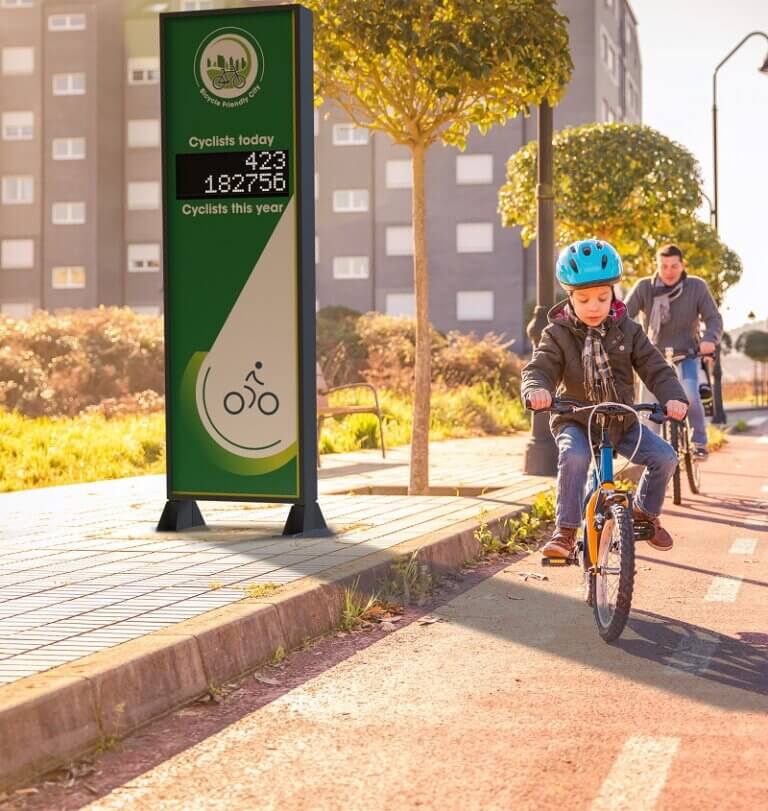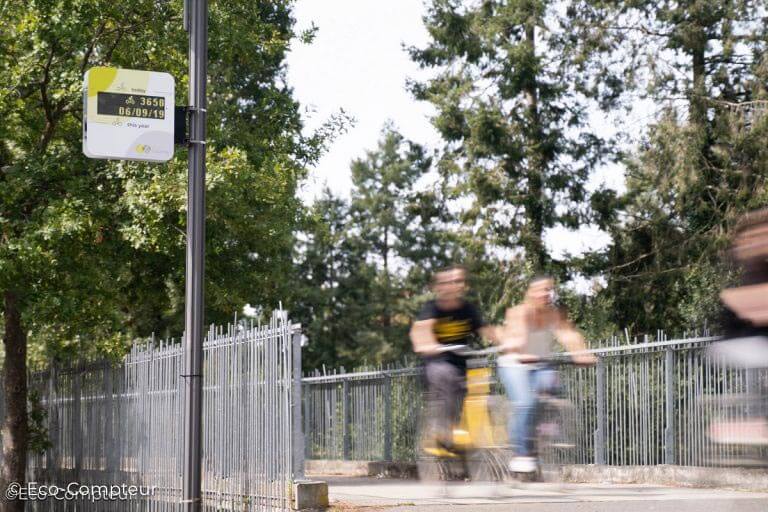Towards a cycling city
An ambitious “bicycle plan”
The City of Paris has voted for an ambitious bicycle plan in 2015, with the goal of hitting 15% of all trips made by bicycle in 2020. This 2015 – 2020 plan is gifted with 150-million euros to double the kilometers of cycling facilities in the city.
This plan is organized around the creation of a backbone network and a secondary network. The backbone network named “REVe – Réseau express vélo” will be created on North-Sound and East-West axes, along the Seine, and will connect the Vincennes and Boulogne parks.
The secondary network will enable a better coverage of cycling paths within the city and resorbe urban disconnections which hinder the development of bicycle usage (bridges, high-traffic crossings, roundabouts, etc.)
The plan also features the creation of 10,000 parking spots for bicycle, and a specific subsidy for e-bike, trikes and cargo bikes purchases.
A complete bicycle monitoring program
To follow the development of its ambitious bicycle plan which aims for a bicycle modal share of 15% in 2020, the City of Paris has already installed 36 automatic bicycle counters and will deploy in the future a total of 100 bicycle counting points to measure with high accuracy the evolution of bicycle usage in the capital. Counters are installed on dedicated (cycle tracks) but also shared facilities (bicycle lanes and bus corridors). These counters will help the city gather precise and unbiased data, both on the short and long term.
One the counters installed on boulevard Voltaire has enabled the city to assess the change after the creation of a secured, dedicated facility, with an average daily traffic of 3,200 bicycles (a +40% increase). Hourly profile is also showing that this infrastructure is mostly being used for commuting purposes (morning & evening peaks).
Many counters with direction were also installed to detect contra-flow cycling as well as speed classification. This information is precious for the city to lower usage conflicts between pedestrians, cyclists, cars, mopeds and e-scooters.
An Eco-DISPLAY Classic will soon be installed on the cycling track of Rivoli street to generate enthusiasm around bicycle use and share with the public the good figures collected.
Measuring the impact of special events: the first Car Free Day in Paris – September 27, 2015
Data taken from automatic counters are useful in many cases: to analyze long-term trends (bicycle usage, year-on-year), to assess weather sensitivity for bicycle commuters, but also to measure the impact of special events. Bicycle count data was particularly useful to observe the impacts of the first-ever Car Free Day in Paris in 2015.
The ZELT inductive loop, a system for automatic bicycle counting, is installed for many years on several bicycle facilities in Paris, including Rivoli street. The first ever Car-Free Day of Paris happened on Sunday September, 27 2015. Organizers decided to close the 4 center “arrondissements” (neighborhoods) to make space for active transportation modes during that day.
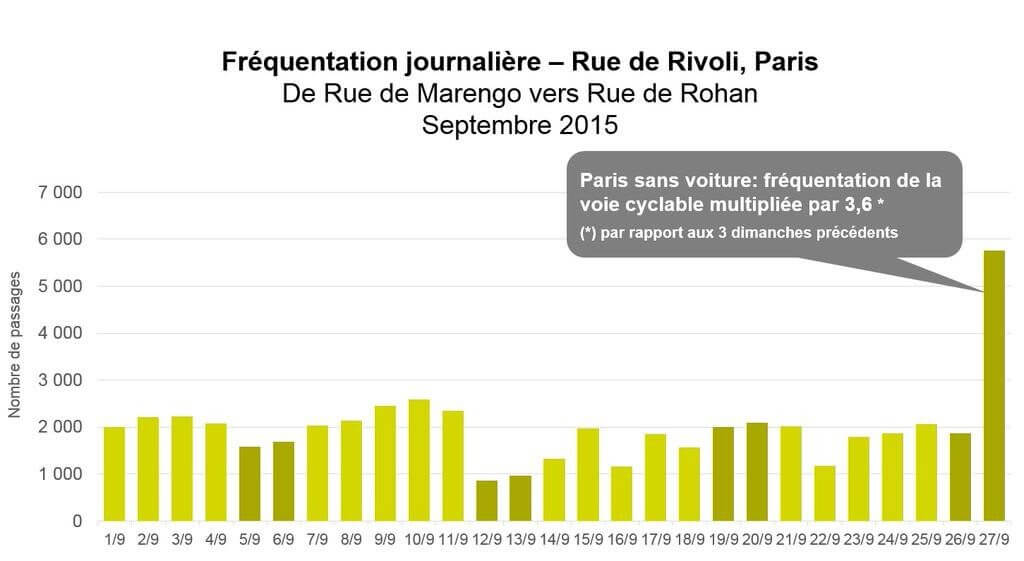
(Source: Agence de la Mobilité / Eco-Compteur)
The results? Count data showed a massive increase in bicycle usage on that particular day in the area closed to motorized traffic (+263% of increase compared to the 3 preceding Sundays), a partial figure which is not taking into account cyclists who used the roadway (and not the cycle track), so the actual increase is probably much higher. But what is interesting is that bicycle use increased in the whole city as well, as proven by figures from other counters installed outside of the zone closed to motorized traffic: the average increase observed was +52% (compared to preceding 3 Sundays).




